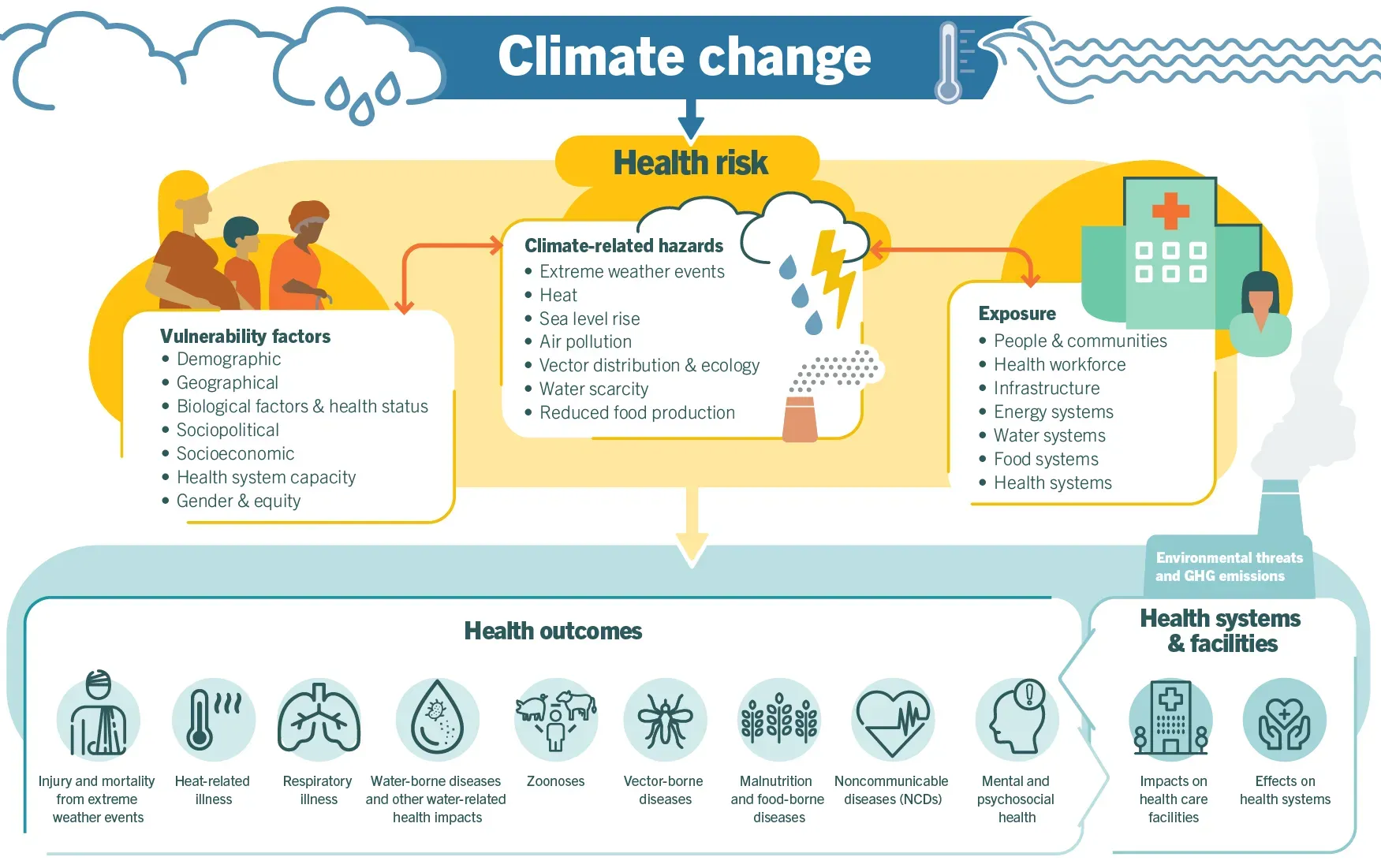Climate and health are tightly linked, and the hidden costs of a warming world go far beyond melting ice or rising sea levels. When temperatures rise, so do health risks, healthcare costs, and the strain on communities that already face social and economic challenges. This article explores the multifaceted relationship between climate and health, focusing on how a warming world imposes not only environmental damage but also tangible, long-lasting costs to our well-being and our economies. By examining the direct and indirect pathways through which climate change affects health, we can better prepare, protect, and invest in a healthier future for all. From hotter days to polluted air, air quality and health intersect in ways that demand smarter policy and resilient healthcare.
To frame this topic through different language, we can describe the environment’s influence on population well-being, the climate-health nexus, and how weather and pollution shape illness, costs, and care systems. In practical terms, ecological shifts alter risk profiles, strain health infrastructure, and influence access to preventive services. This perspective emphasizes how heat, pollution exposure, and shifting disease patterns interact with social determinants to shape outcomes across communities. Recognizing these connections helps policymakers and health professionals design adaptive, resilient systems that protect people before crises strike and that sustain care during extreme events.
Frequently Asked Questions
What are the health impacts of climate change, and how can healthcare systems prepare for extreme weather health risks?
The health impacts of climate change include more frequent heat-related illness, worsened air quality, and disease risks from floods and droughts. Preparing healthcare systems involves climate adaptation in healthcare: upgrading facilities to withstand heat and floods, improving surveillance for heat-related illness and vector-borne diseases, and ensuring robust supply chains. Early warning systems, cooling centers, and equitable planning help protect vulnerable populations and reduce hospital admissions, while investments in resilience lower the long-term economic costs of climate change on health.
How do air quality and health interact with climate change, and what strategies reduce the economic costs of climate change on health?
Air quality and health are tightly linked as higher temperatures increase ground-level ozone and wildfire smoke, worsening asthma, cardiovascular disease, and other respiratory conditions. Reducing the economic costs of climate change on health requires emissions reductions, clean energy, and climate adaptation in healthcare—strengthening hospital resilience, maintaining essential services during disasters, and expanding air quality monitoring. Public health messaging, targeted protections for vulnerable groups, and equitable policies can lower both health risks and healthcare costs over time.
| Theme | Key Point | Notes / Examples |
|---|---|---|
| Climate-health relationship | Climate and health are deeply intertwined; warming imposes environmental and health costs beyond visible environmental changes. | Direct tolls, health system strain, and economic impacts accompany a warming world. |
| Direct health toll of heat | Rising temperatures increase heat-related illnesses, dehydration, and death. | Heat waves affect older adults, children, people with chronic illness, outdoor workers, and those without cooling options. |
| Indirect health pathways | Climate affects health via air quality, water/food safety, and diseases carried by vectors or animals. | Habitat shifts and temperature/rain changes expand ranges of mosquitoes and other disease vectors. |
| Air quality & respiratory health | Hotter days worsen air quality through higher ozone and wildfire smoke exposure. | Exacerbates asthma, COPD, cardiovascular disease; impacts vulnerable groups more. |
| Extreme weather events | Floods, droughts, hurricanes threaten health infrastructure and safety. | Water contamination, malnutrition risk, injuries, and disease spread after events. |
| Economic health costs | Climate-driven health burdens drive higher medical costs and reduce productivity. | Hospitals face higher admissions; public health systems can be overwhelmed; recovery costs rise. |
| Mental health | Climate anxiety and grief, plus stress from disruptions, affect mental well-being. | Intersects with social determinants of health, impacting livelihoods and access to care. |
| Equity considerations | Lower-income and marginalized groups experience higher exposure and fewer adaptive resources. | Calls for inclusive planning, targeted interventions, cooling centers, and clean energy access. |
| Adaptation in healthcare | Invest in climate resilience within health systems. | Updating building codes, surveillance for heat-related illness and vector diseases, robust supply chains. |
| Prevention & planning | Prevention, preparedness, and smart design reduce health costs over time. | Early warning systems, urban heat-island reduction, and emissions reductions aid health. |
| Public engagement & individual actions | Clear climate-health information and personal steps lower risk. | Hydration, air purification, sustainable transport, and healthy housing matter. |
| Collaboration & policy | Cross-sector collaboration strengthens resilience and reduces costs. | Policy, healthcare, researchers, businesses, and communities must work together with social protections. |
Summary
Climate and health are deeply intertwined, and the warming world affects every facet of well-being—from hospitals to households and local economies. By investing in proactive public health measures, resilient healthcare infrastructure, and equitable policies, we can reduce health risks, shrink costs, and build healthier, more resilient communities. The path forward combines preventive action, clean energy, strong air and water protections, and inclusive planning that centers those most at risk. As we address climate and health together, we safeguard current and future generations and create a healthier planet and population.



